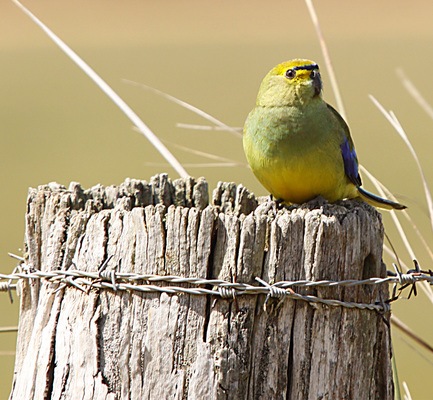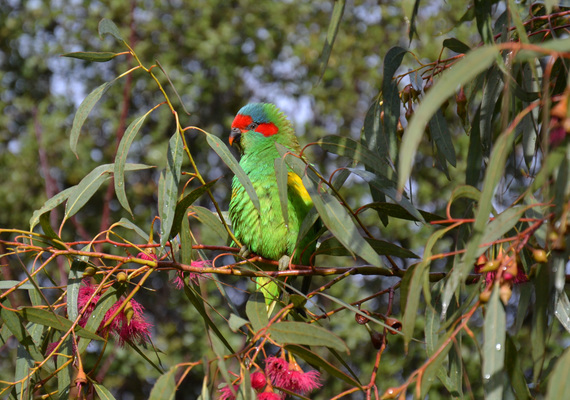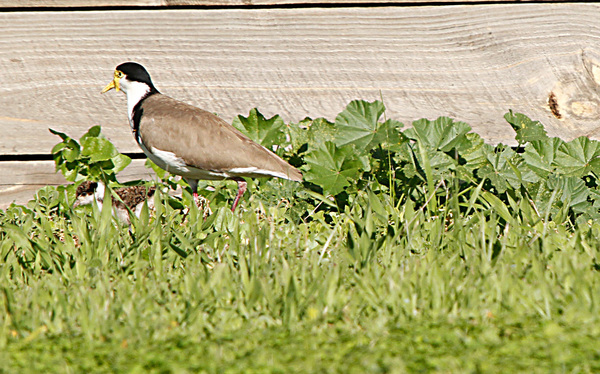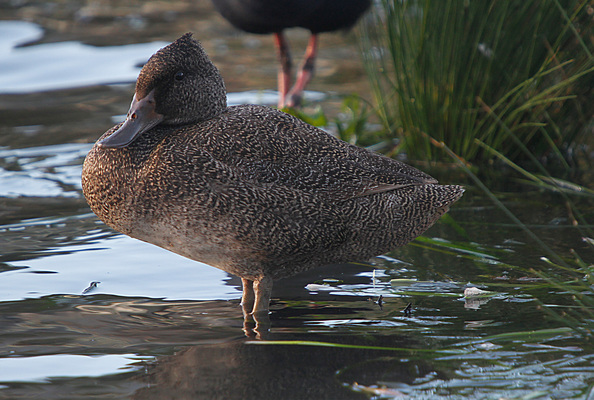WE have finally had some decent winter rain, but the west track dam in the Ocean Grove Nature Reserve is still empty, so I’m hoping for a lot more.
My planned trip to Western Treatment Plant this week was cancelled due to the wet roads, as one of the birdwatchers had managed to bog their car.
I did have a drive around the Bellarine with Phil, a Queensland Birdlife member. We saw flame robins, double-banded plovers, hooded plovers, red-capped plovers and a flock of about 15 blue-winged parrots at Point Impossible. There were a few musk ducks at Lake Connewarre, as well as a majestic white-necked heron in a farm paddock.
All in all it was a very successful day, and just reinforced to me the variety of bird life that we are lucky to see around this area.
Luckily we did see one raptor, a nankeen kestrel that was perched on a telegraph pole in Connewarre, so my ‘raptor a day keeps the doctor away’ mantra was able to continue.
Blue-winged parrots are small parrots (21cm in length) with an olive-green head and upper body, and a green-blue tail. They have a yellow facial patch which extends back to the eye, and a narrow, dark blue band is found across the forehead.
As the name suggests, the blue-winged parrot has a large, dark blue patch on the wings. Female can be distinguished from males in that they are slightly duller in colour.
It is known that some blue-winged parrots move from Tasmania to the mainland in the winter months, but seasonal the movements of these parrots is not well understood.
The main populations of Blue-winged Parrots are in Tasmania and Victoria, particularly in southern Victoria and the midlands and eastern areas of Tasmania, however the birds are listed as endangered in Tasmania but their numbers are more secure in Victoria.
It’s always lovely to spot these beautiful birds.
I also spotted around 30 freckled ducks when I went for a walk at Blue Waters Lake in Ocean Grove. They were in great photo range which was lovely, as usually they are hiding around logs or reeds.
Freckled ducks are Australia’s rarest duck, so once again to see them around this area is such a bonus.
At the end of my street, a masked lapwing pair are looking after a newly hatched offspring. The little chick must be so cold, but so far it’s going strong.
I received a lovely email from Ocean Grove resident, Lynne, who has eastern spinebills, musk lorikeets, hybrid lorikeets, and yellow-tailed black-cockatoos in her garden eucalypts and sheoaks. Lynne must have a beautiful garden to attract these birds. I have included one of Lynn’s photos of a musk lorikeet with this article.
I also received an email from Pam and David, who saw a grey goshawk (white morph) when driving down Banks Road near the railway line. I’ve driven down there a few times to see if I could see the bird, to no avail, but I will keep my eyes peeled! Apparently these birds move around in the winter as it’s too cold in the hills especially around the Otways.
Thanks so much for the emails, it’s always great to receive them.
Don’t forget to check out the Friends of the Ocean Grove Nature Reserve Facebook page. If you are interested in organised bird watching activities, you can check out Bellarine Birdlife at birdlife.org.au/locations/birdlife-bellarine-peninsula.
I’m off to Darwin for a spot of NT bird watching. I hope I don’t step on a snake or a crocodile. In the meantime, enjoy the rain and take care.
– JEN CARR, JENNIFER.CARR6@BIGPOND.COM










